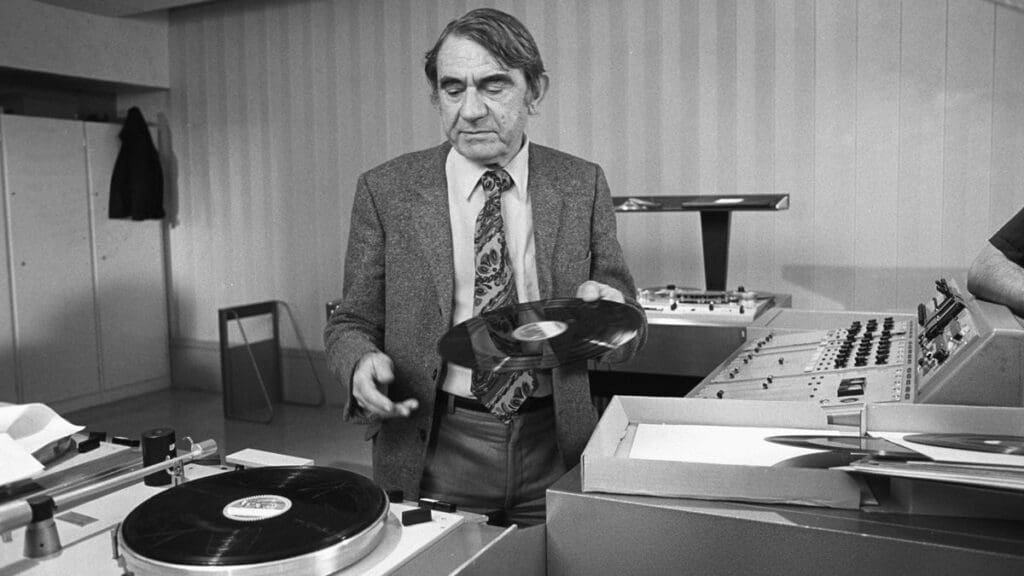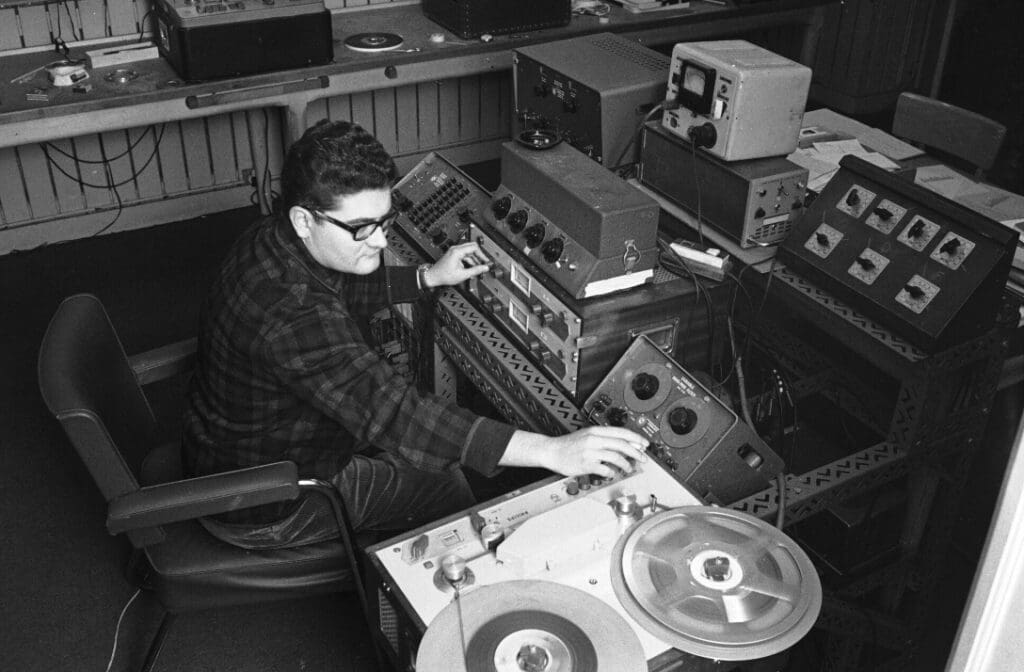Musique concrète is a form of experimental music that originated in France in the late 1940s. The most famous pioneer of this style of music was Pierre Schaeffer.
Pierre Schaeffer, who founded the Groupe de Recherches Musicales (GRM) in Paris in 1958. Musique concrète was initially controversial, as it challenged traditional notions of music and composition. However, it went on to influence a wide range of genres, including electronic music, ambient music, and sound art. Some of the most famous works of this genre of music include Schaeffer’s “Étude aux chemins de fer” and “Symphonie pour un homme seul,” as well as the works of composers such as Karlheinz Stockhausen and Luc Ferrari.
It involves the manipulation and transformation of recorded sounds, such as environmental noises, human voices, and musical instruments, through various techniques such as splicing, looping, and filtering.
The resulting sounds are then arranged into a composition, often with little or no regard for traditional musical structures or conventions. Musique concrète has been influential in the development of electronic music and sound art, and continues to be a source of inspiration for many contemporary composers and musicians.
Famous Pieces
One of the most famous pieces of musique concrète, was by Pierre Henry, called Variations pour une porte et un soupir. This translates to Variations for a Door and a Sigh. Therefore, all he used was a door and a human sigh. The piece lasted about 30 minutes. Here is a short clip below for you to listen to.
Other Famous Musique Concrète Artists
Some other famous Musique Concrète artists include Luc Ferrari, and Karlheinz Stockhausen.
Maybe this YouTube video will give you more of an idea of the type of sounds you would expect to hear if you were creating musique concrète.
How Did Musique Concrète Affect Modern Music?
Musique Concrète had a significant impact on modern music by introducing new methods of sound manipulation and composition. It paved the way for the development of electronic music and influenced genres such as ambient, experimental, and industrial music.
Musique Concrète modernized music by introducing the use of recorded sounds as musical material, allowing for a wider range of sonic possibilities and experimentation in composition.
What Is The Future Of Musique Concrète?
The future of this style of music is difficult to predict, as it depends on the evolution of technology and artistic trends. However, musique concrète has continued to influence and inspire experimental music and sound art.
There is proof of this in modern composers today, who work within the realm of sonic manipulation.
Valerio Tricoli – “Le Qohelet” from Miseri Lares (PAN, 2014)
Jérôme Noetinger – “La tirette à Paulette” from dR (PiedNu, 2018)
Giovanni Lami – “PPK1” from Bias (Consumer Waste, 2016)
John Wiese – “Superstitious” from Deviate From Balance (Gilgongo, 2015)
Summary
Would you try this process of creating music, or maybe you have already experimented yourself using this technique. Sonic manipulation and experimental composition are more prevalent than you think in the music industry. They may not be as close in technique to the original musique concrète, but the basics are there.












